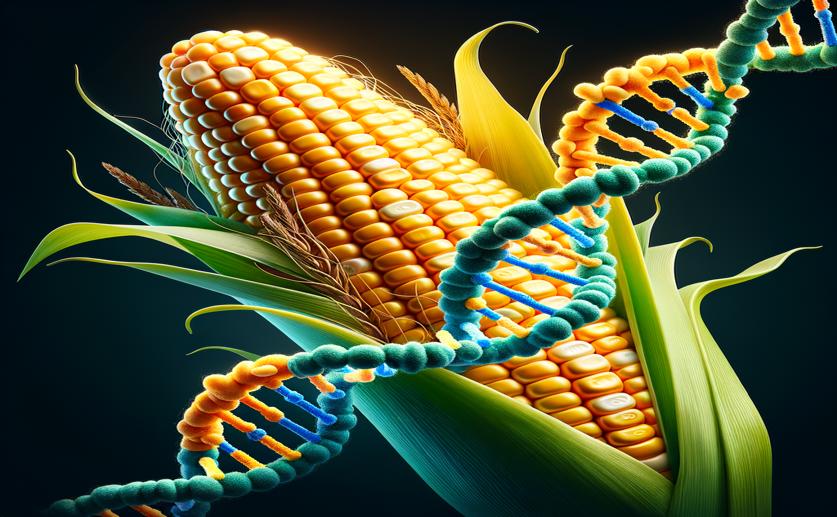
Understanding the Ubiquitin Gene Family in Corn
Greg Howard
17th May, 2024

Image Source: Natural Science News, 2024
Key Findings
- The study identified 98 UBP genes in maize, classified into different subfamilies based on their sequences
- UBP14 is crucial for root development under phosphate deficiency, similar to its role in Arabidopsis
- UBP12 and UBP13 are important for nitrogen deficiency response, stabilizing key proteins involved in stress responses
References
Main Study
1) Genome-wide identification and expression analysis of Ubiquitin-specific protease gene family in maize (Zea mays L.)
Published 16th May, 2024
https://doi.org/10.1186/s12870-024-04953-5
Related Studies
2) The ubiquitin-specific protease subfamily UBP3/UBP4 is essential for pollen development and transmission in Arabidopsis.
Journal: Plant physiology, Issue: Vol 145, Issue 3, Nov 2007
3) Ubiquitin-specific protease 14 (UBP14) is involved in root responses to phosphate deficiency in Arabidopsis.
4) Arabidopsis ubiquitin-specific proteases UBP12 and UBP13 shape ORE1 levels during leaf senescence induced by nitrogen deficiency.
5) UBIQUITIN-SPECIFIC PROTEASE 26 is required for seed development and the repression of PHERES1 in Arabidopsis.



 16th May, 2024 | Jim Crocker
16th May, 2024 | Jim Crocker